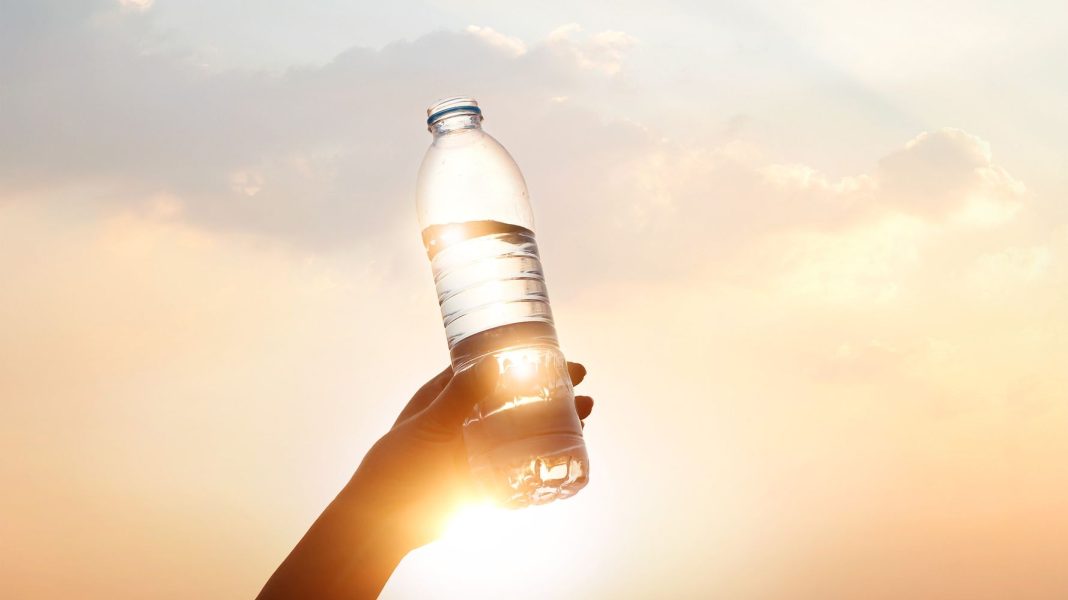Bill has already done a post regarding hydration (https://www.airsoftaction.net/good-gear-to-go-hydrate-to-thrive/) but, with temperatures continuing to climb and with the weekend nearly upon us, we didn’t think it would hurt to add a reminder…
Up to 60% of a human adult’s body is made up of water. It is a vital component that is essential for the body’s normal functioning, including waste removal, blood circulation and body temperature maintenance. It aids in digestion, prevents constipation, stabilises heartbeat and helps protect vital organs.
Without enough of it (water!) we can become dehydrated and when that happens the symptoms can be highly unpleasant, including muscle cramps, fatigue, loss of appetite and lightheadedness, to name but a few.
When not treated promptly and appropriately, severe dehydration can lead to death.
Each individual’s needs are unique to them and depend on their health, age, size and weight as well as activity levels, the type of job they do and the climate they live in. Drinking little and often is the best way to stay hydrated. In the UK, the Eatwell Guide suggests you should aim for 6-8 glasses of water and other liquids each day to replace normal water loss – around 1.2 to 1.5 litres. Water, lower fat milk and sugar-free drinks, including tea and coffee, all count.
Remember though, that caffeinated drinks like tea and coffee can make the body produce urine more quickly. Fruit juice and smoothies also count but, because they contain “free” sugars (the type we are encouraged to cut back on), you should limit these to a combined total of 150ml per day.
Many of the foods we eat contribute to our fluid intake – for example, dishes like soup, ice cream and jelly, as well as fruit and veg with a high water content, such as melon, courgette or cucumber.
When exercising (even mildly) in hot temperatures, the amount you need to stay hydrated can easily double but, as there is no “hard and fast rule”, it is down to the individual to ensure they stay hydrated.
So, how do you stay hydrated?
- Drink Water …plenty of it!
If you know you are going to be playing in the heat, start your water intake when you wake up and make sure you carry water with you in-game. During play, try not to guzzle large amounts in one go “little and often” is the way. - Know the signs of dehydration.
Does your skin feel dry, irritated, inflamed, itchy, or sensitive? That’s a sign of dehydration. Experiencing a headache or feeling dizzy or fatigued? These are signs, too. Muscle cramps, rapid breathing, fainting and not urinating (or having very dark yellow urine)are others.
One, often overlooked sign of dehydration, is when you STOP sweating! If you’re experiencing any of these symptoms, the simple solution is to get out of the heat and drink plenty of liquids. There are some over-the-counter options (like Hydralyte) that balance out electrolytes and sodium with dehydration as well. If your dehydration is severe, get help immediately! - Check the colour of your urine.
No, we are not “taking the pee”! A good measurement of hydration is the colour of your urine. Pale urine, similar to the colour of champagne, indicates proper hydration while darker urine is a sign that you need more water. A dark yellow or amber colour means you may have mild to severe dehydration. - Avoid alcohol, sugary drinks and/or caffeine.
Some liquids work against hydration! Drinks like coffee, sugary sodas, beer, wine and hard spirits, lemonade, sweet tea, energy drinks, smoothies and flavoured milk are all culprits! They are loaded with sugar, sodium and other ingredients that remove water from your body tissues. Consider swapping some of these out, or rehydrating with more water for each dehydrating drink you consume. - Cool down.
It isn’t always easy when you are in the midst of a fire fight to (quite literally) keep your cool, however, it is important when you get the opportunity to let your body cool down again. Proper hydration isn’t just about drinking water, it’s about regulating your body temperature, too. So, get out of the sun, take on fluids and chill for a few minutes – a spray bottle that you can use to mist yourself with water can be a god-send! - Eat food with high water content.
Salty snacks can make dehydration worse, so swap out the peanuts and crisps (or a salt-laden burger) with these for maximum benefit: cucumber, celery, tomatoes, watermelon, strawberries and grapefruit. They all contain 90 percent water or higher. - Replenish when you sweat.
Obvious really but worth repeating.
Your sweat rate, the humidity and how long you’ve exercised are all factors to consider. Proper hydration means getting enough water before, during, and after exercise. The American Council on Exercise recommends these guidelines before, during, and after a workout:
Drink 17-20 oz. two to three hours before you exercise.
Drink 8 oz. 20-30 minutes before you exercise.
Drink 7-10 oz. every 10-20 minutes during exercise.
Drink 8 oz. no more than 30 minutes after exercise.
As Bill said in his earlier post:
“We’d stress that we are NOT doctors, but you need to take notice of your own body, and this seems largely in line with what we ourselves drink over the course of a days play, but of course in extreme conditions you may need to notch these levels up higher. Buy a bottle or hydration system with volume markings on it if possible to keep track of your intake (Nalgene and Camelbak both make excellent models).”
Whatever you are doing this weekend (whether you are playing or not), have a safe, enjoyable one and if it is hot, remember to hydrate!







